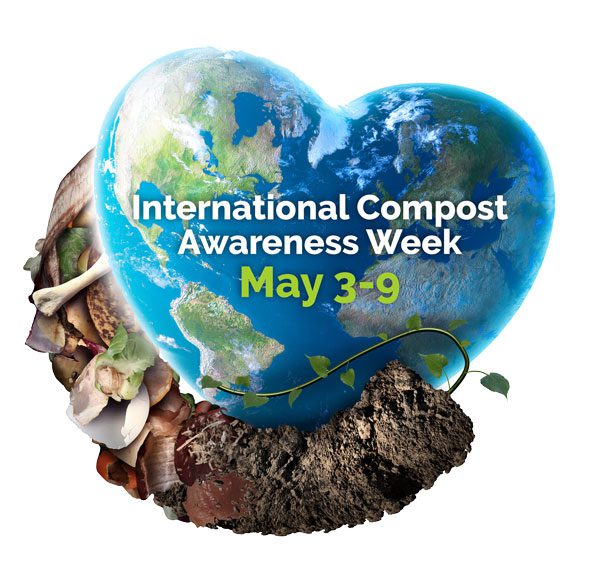Hands down, compost is the best way we can add nutrients back into the soil. Beyond being rewarded with thriving plants, it’s eco-friendly and properly disposes of fruit and veggie scraps otherwise headed to a landfill. In honor of International Compost Awareness Week (May 3-9), here are some tips to help you along the way.
When To Start?
If you’re new to composting, anytime is a good time to start. I add to my heap throughout the cold Canadian winters, but keep in mind that organic matter decomposes faster in the spring and summer. Microbes need heat to be active! If you start in the spring, you’ll have black gold ready to use in the fall.

Forbidden Materials
Fruit and veggie scraps along with grass clippings, leaves, and branches are perfect for the compost heap, but some things should never make it there. Forbidden materials include:
- Cat, dog and human poop
- Meat, bones and fatty food waste
- Dairy products
- Various harmful garden weeds, such as bindweed
- Diseased plants
- Chemically-treated wood products
- Coal ash or charcoal ash
Chop Things Up
The smaller the pieces you throw into the heap, the faster they will decompose. It’s always a good idea to cut banana peels and leftover veggie scraps into tiny chunks so the microbes can break them down quickly for you to use in the garden.
Speed Things Up
Did you know you can speed things up with various compost activators? Anything high in nitrogen will work; think well-rotted manure, nitrogen-rich plants like comfrey leaves, and even human urine! That’s right. Clare Foster, author of Compost: How To Make And Use Organic Compost To Transform Your Garden, says pee is sterile and full of minerals and vitamins. Occasionally adding it to the heap works wonders.

Compost Recipes
In her book, Foster offers the following two composting recipes:
Small Gardens
- 4 banana skins
- 14 used tea bags
- 4 cups of coffee grounds
- 5 apple cores
- 4 quarters of melon skin
- 6 moldy tomatoes
- 1 large bowl of potato or veggie peels
- 1 egg carton, shredded
- Several sheets of crumpled newspaper
- 1 old pot plant, with soil
- 1 bucket of shredded leaves
Large Gardens
- 1 bucket of moist kitchen waste
- Half a bucket of semi-rotted horse manure mixed with straw
- 1 wheelbarrow of spent runner bean plants, shredded
- 1 wheelbarrow of spent marigold plants, shredded
- 1 bag of hedge clippings, shredded
Mix all of the ingredients and place them in a composter. Add more material until the container is full. Cover and leave for a week before turning with a shovel.
Happy composting!